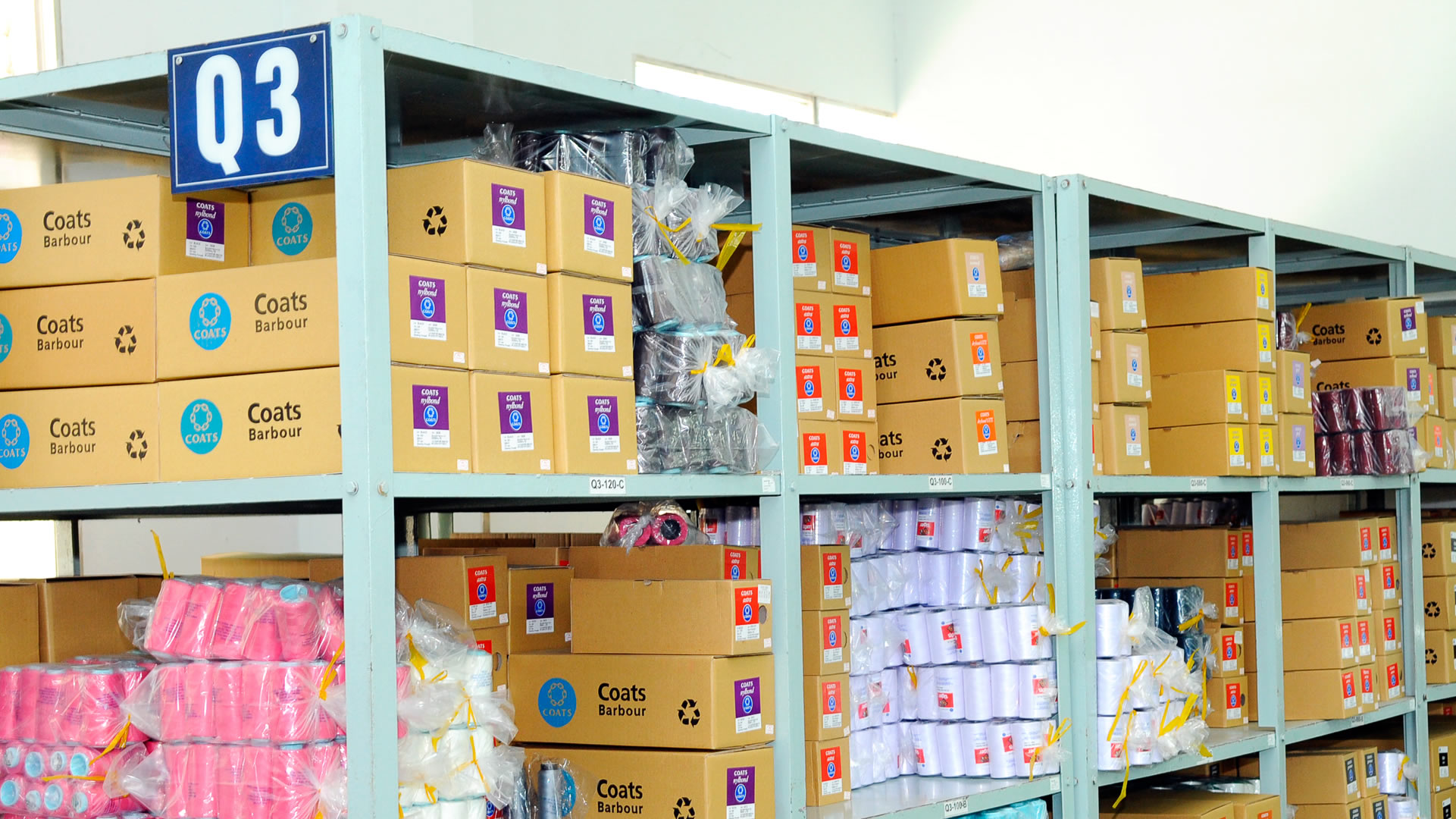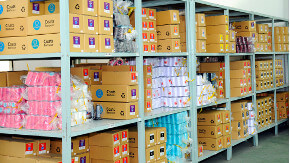
Thread Storage
Contents
Storage Location
Thread Organisation
Warehouse Inventory Management
Factors Affecting Storage
Common Storage Problems
Storage Tips
Importance of Thread Storage
Incorrect storage of thread can have an adverse effect on its performance. If thread is to sew well, it must be looked after properly.
There is often a certain time lapse between purchase and use, i.e., delivery of thread to the thread-user and the moment it is placed on the sewing machine. Hence, thread must be warehoused with care under regularly monitored conditions to prevent degradation by soiling, light, heat, dampness, dryness and mildew.
In this Bulletin Post, we draw your attention to correct storage procedures and preventive measures to avoid hazards. After all, thread is an investment worth protecting.
Storage Location
- Threads should be stored in a clean and dust-free atmosphere.
- Thread should ideally be stored in a warehouse or storage room that is as close to the shop floor as possible. This makes the stored thread easily accessible.
- Warehouses for storing either cotton or synthetic threads should be situated in areas where atmospheric pollution (such as smoke, fumes and gases) is at a minimum. The presence of certain gases such as oxides of nitrogen (which could originate from gas fires, gas burners or exhaust fumes from petrol / diesel engines) can induce yellowing of white shades of thread. Hence, thread should therefore be stored in areas where such gases are absent.
Interiors
The interiors are designed depending on the amount of thread used. The storage area should have neat aisles, uniform shelves and racks which facilitate organised storage of thread.

Thread Organisation
Different businesses have different needs, hence there is no standard method to arrange thread in the storage area. It is based purely on requirement and use.
However, some of the common parameters that are used to decide the placement of the thread are listed below:
Frequency of Use – How often do you use a certain kind / brand of thread? Arrange your thread based on usage priority.
For example, if you make embroidered garments, you probably use trilobal polyester thread more than polyester corespun thread. Hence, the most easily accessible shelves and racks should contain trilobal polyester.
Application – Your thread can be arranged based on garment applications.
If you manufacture different kinds of apparel – which may include a variety of garments like shirts, t-shirts, trousers and suits for men and women, then you can arrange your thread based on the application.
Different racks can have thread for different garments. For example, polyester corespun thread can be stored in a rack labelled ‘shirts’ and continuous filament texturised polyester thread can be stored in a rack labelled ‘t-shirts’.
You can take this idea further by arranging your thread as per the stitching operation.
Colour – Arrange thread based on colour families. For example, you can store reds and greens in a different area, and label the shelves correspondingly, which will make it easy to find thread of a certain colour.
Thread Size – Thread can be efficiently placed based on its Tex number or ticket number.
Brand / Type – Thread from different manufacturers can be placed in different locations. Further, various brands of thread from the same manufacturer can also be arranged separately.
For example, you can place Epic, Dual Duty and Astra separately. This can avoid mixing up the thread, and hence avoid selection errors.
Warehouse Inventory Management
There should be a record of thread stored in the warehouse for ready reference with an inventory or a database that is constantly updated. This database should be searchable or filed based on brands, sizes, and purpose of thread. The location of each of these threads, i.e. the aisle, shelf and box number, must also be listed in the database.
The beginning of each aisle in the storage area should clearly mention the specifications and amount of all threads, stored in different shelves in the particular aisle.
If your budget permits, you can go optimise your inventory with bar coding and computerisation. That way, if you need a certain thread, you can just search for it in your database and find out:
- If that thread is available in your warehouse
- The number of vicones / spools in stock
- Whether you need to order it, if it is in short supply or out of supply
This will make your thread storage extremely convenient and efficient. Your warehouse or storage staff must have a clear idea of thread location and right working procedures.

Factors Affecting Storage
Light
- Sunlight must not be allowed to shine directly on the storage space.
- Containers should not be left lying around with lids removed, exposing the thread to direct sunlight.
- Windows should have blinds, and skylights should be diffused.
- Although the best kind of lighting is provided by tungsten-filament or fluorescent tubes, they can cause colours to fade and turn cardboard containers yellow. So, one should frequently examine packages for signs of damage.
Temperature and Humidity
These conditions should be as constant as possible and kept sufficiently low to prevent the formation of mildew.
Excessive storage temperatures and relative humidity can damage threads. When threads are stored under extremely adverse conditions for a prolonged period, the following can occur:
- Loss of strength due to over-exposure to ultra-violet light
- Poor sewing performance due to high tension which causes the lubricant to move to the centre of the thread because of high temperatures
- Reduced strength in cotton threads due to high tension
- Fading of colour in non-fast shades and potential yellowing of white threads
The ideal ambient conditions for thread storage are:
Temperature – Between 15 ˚C and 25 ˚C (50 ˚F and 77 ˚F)
Humidity – Between 40% and 60%
Common Storage Problems
Optimal storage of thread is generally affected by some common problems, which are listed below:
- Lack of space
- Prolonged storage time
- Location identification
- Damaged thread
- Lost labels
- Damaged packaging
- Improper transport
- Improper lighting
- Excessive humidity
- Thread contamination
- No clarity in thread identification
- Untrained staff
- Water logging
Being aware of the above issues and planning in advance to tackle them will help you a great deal.
Storage Tips
Here are some tips to help you store thread the right way:
- Keep the thread containers closed at all times.
- Examine packages from stock that have been stored for a long time and check for damage.
- Avoid placing food and beverages near the thread as they can cause stains and attract pests.
- Check ventilation periodically to ensure that no contamination/yellowing occur due to the boiler, central heating, vehicle exhaust emissions or other atmospheric pollutants.
- Avoid proximity of thread to electric lighting in warehouses.
- Paint your thread racks in warehouses as per your thread reference.
- Having made sure that the thread will not deteriorate in storage and that stocks are utilised in strict rotation, the thread should not be left lying around the sewing room for long periods. So it make sense to use the thread as soon as it is taken out of store.
- Thread can be stored in transparent plastic boxes (instead of cartons) so that you can see which thread is inside without having to open the box.
- Make labels in your warehouse large and easy to read.
